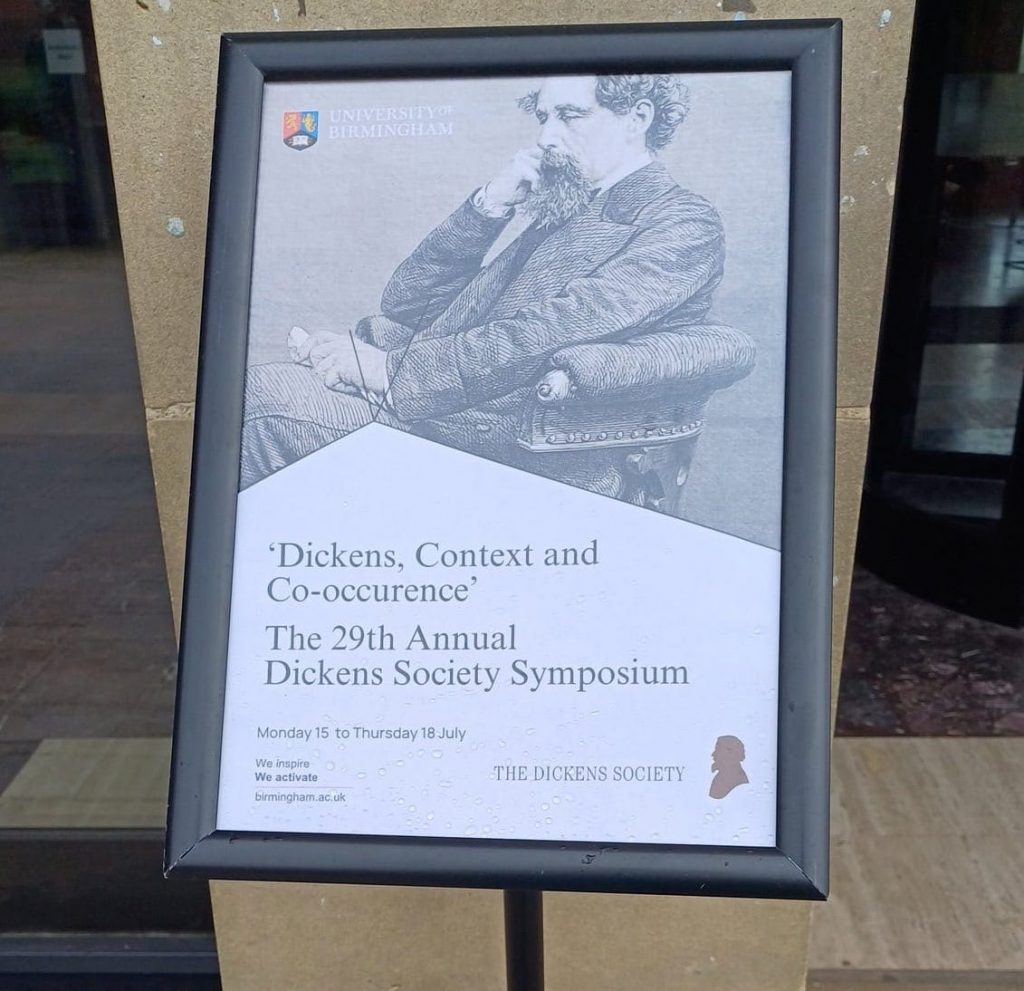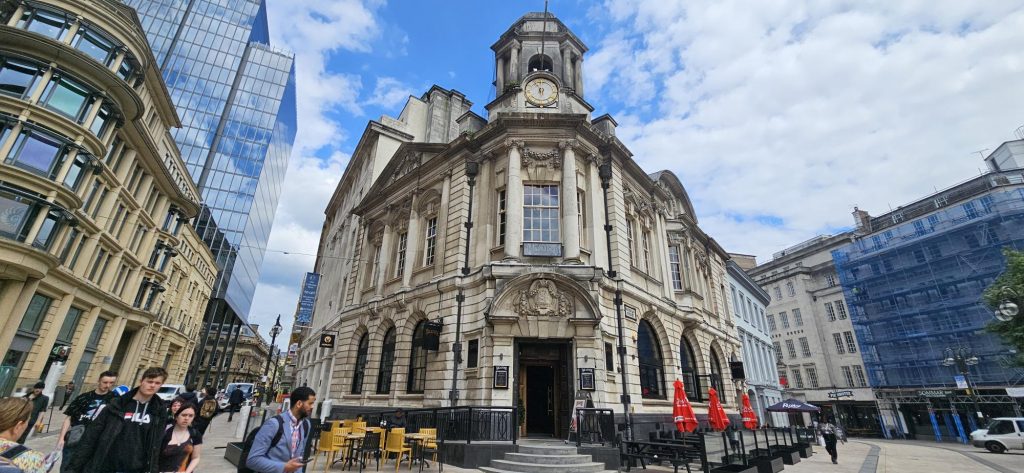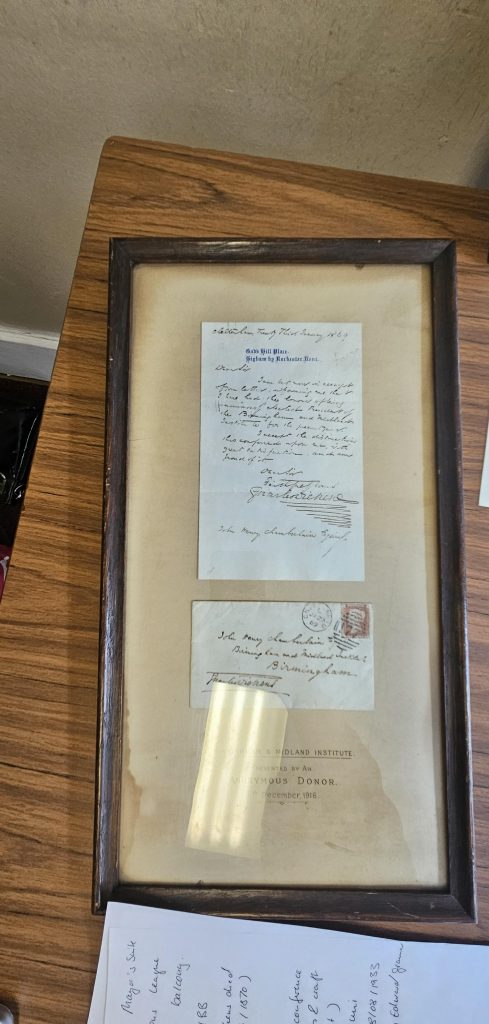From Bleak House to Birmingham: New Perspectives on Dickens at the 29th Annual Symposium
This post was contributed by Dean J. Hill, recipient of the Robert J. Partlow, Jr. Prize at the 2024 Dickens Society Symposium and a postgraduate research student at the University of Birmingham.
The Best of Times: A Dickensian Gathering in Birmingham
As scholars and literary enthusiasts converged on Birmingham for the 29th Annual Dickens Society Symposium, we were reminded of Dickens’s extraordinary gift to capture the spirit of an age. The event’s rich programme exemplified the contrasts and complexities inherent in his works, echoing the opening to A Tale of Two Cities: “It was the best of times, it was the worst of times, it was the age of wisdom, it was the age of foolishness” (7). Dickens’s famous quote set the tone for the symposium’s diverse approaches. Scholars presented everything from traditional close readings to cutting-edge digital humanities. Adaptation studies and international perspectives added to the mix, each bringing a unique viewpoint to the discussion. Together, they composed a rich, multifaceted concerto that echoed the enduring complexity and relevance of Charles Dickens’s legacy in our modern world. We were, in that moment, gloriously Dickensian.
Theme and Highlights: Context, Co-occurrence and Celebration
From 15th to 18th July 2024, the University of Birmingham proudly hosted the 29th Annual Dickens Society Symposium on the theme of “Dickens, context and co-occurrence,” exploring the various contexts in which Dickens’s works are set, connect to and imagine. The choice of Birmingham as the venue proved particularly apt: an industrial powerhouse that Dickens visited several times during his life, embodying the spirit of progress and innovation that he both celebrated and critiqued. As Dickens himself noted during his visit in 1844: “Birmingham is, in my mind and in the minds of most men, associated with many giants. I found my strong conviction, in the second place, upon the public spirit of the town of Birmingham” (Speeches 95).
The symposium opened with well-received addresses from Chris Louttit, President of the Dickens Society, and Andrew Gasson, Chairman of the Wilkie Collins Society. The initial day concluded with an exhibition of rare books and manuscripts on Dickens and Collins, curated from the Cadbury Research Library collections by Caroline Radcliffe. This exhibition not only welcomed attendees to Birmingham but also celebrated the 200th anniversary of Collins’s birth, highlighting the enduring warmth of Dickensian fellowship in modern-day Birmingham.
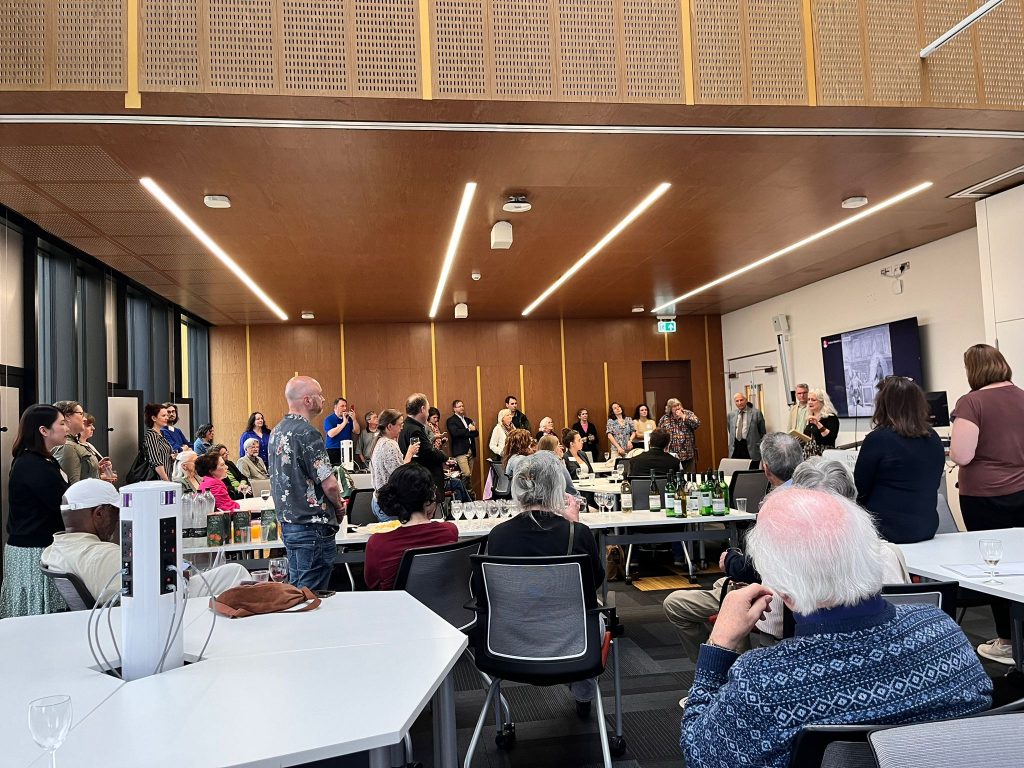
Over the course of the event, the symposium offered a rich tapestry of themes exploring Dickens’s life, works and enduring legacy. Panels covered a wide range of topics, reflecting the diversity and vibrancy of current Dickens scholarship. Historical and social contexts were examined in depth, with papers such as Jeanie Grant Moore’s investigation of the 14th Earl of Derby’s influence on Martin Chuzzlewit shedding new light on Victorian politics and Dickens’s engagement with the social issues of his time.
Furthermore, this comprehensive approach to the symposium’s theme allowed for a multifaceted exploration of Dickens’s works, considering not only the historical and literary contexts in which he wrote, but also the ways in which his writings continue to resonate and “co-occur” with contemporary issues and adaptations. The following sections will examine more closely the various perspectives and methodologies presented during this intellectually stimulating gathering of Dickens scholars and enthusiasts.
Digital Frontiers in Dickens Studies
As Dickensians gathered in this vibrant city, they found themselves embracing the digital frontier of literary studies. From Joel J. Brattin and Arthur Carlson’s demonstration of WPI’s new Dickens Portal to Michaela Mahlberg’s hands-on session with CLiC – demonstrating corpus stylistics and how computer-assisted methods could be used to analyse literary texts – the workshop showcased technology’s capacity to illuminate Dickens’s works in ways the author could barely have imagined. Peter J. Capuano talked about new research methods, while Claire Wood presented the Dickens Code project. This project lets both academics and the public work together to decode Dickens’s unknown writings. These initiatives reflect Dickens’s own enthusiasm for progress and invention, which he spoke about in 1844.
Moreover, the symposium showcased new ways to study Dickens using modern technology. Peter J. Capuano combined digital analysis with traditional close reading. He looked at how Dickens used common sayings in clever ways in his later novels. This research shows how Dickens played with language to make his writing more expressive. Furthermore, Eleanora Gallitelli exploited the web application CLiC to support discourse analysis in narrative fiction, investigating Dickens’s ideas of liberty and oppression by analysing the occurrences of words such as “liberty,” “oppress” and “empire” across his novels. The WPI Dickens Portal, presented by Joel J. Brattin and Arthur Carlson, offered delegates the chance to access a wealth of materials such as first editions, correspondence and artwork, unveiling the richness of Dickens’s universe.
Following the focus on digital tools, Milan Terlunen furnished the symposium with a fresh perspective on scholarly engagement with Dickens: he analysed the most frequently quoted passages and their evolving contexts, arguing such repeated quotations create a “textual atmosphere” shaping our understanding of key Dickens moments. Far from rote repetition, he contends that these atmospheres reveal how Dickens scholarship adapts to critical trends. To support this, Terlunen presented a selection of data from his quotation-detection algorithm, identifying the most frequently quoted passages and changing use over time.
Contextualising Dickens: Relationships, History and Biography
It is important to recognise that Dickens’s literary relationships were a key focus. Mark Cronin explored the professional dialogue between Dickens and Thackeray. Dominic Rainsford, General Editor of the Dickens Quarterly, studied a less-discussed influence: Walter Scott. Rainsford proposed “co-occurrences” in their themes, form and use of peculiar, aging narrators, comparing texts like Dickens’s Master Humphrey’s Clock and Scott’s Chronicles of the Canongate to elucidate Dickens’s literary goals and the factors influencing his works’ reception.
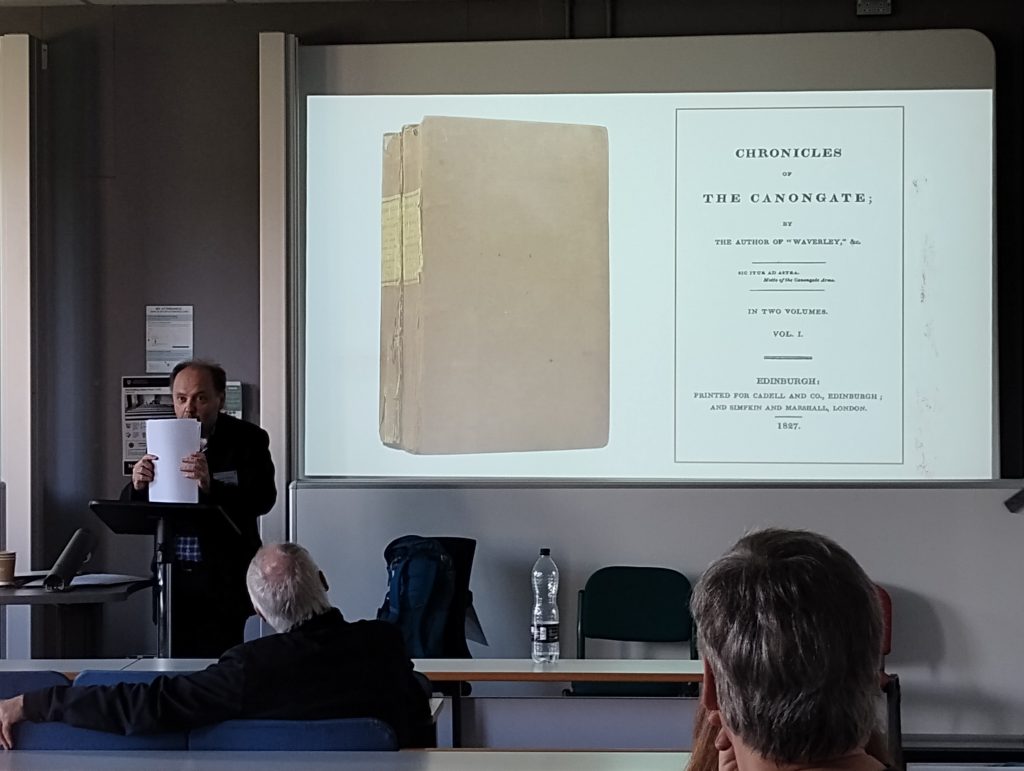
Complementing analysis of textual atmospheres, Lydia Craig explored Dickens’s life as a lens for his fiction. Focusing on a failed courtship with Maria Beadnell, Craig argued that ethnicity, not just class, played a role in this rejection. Maria’s Welsh family, despite seeming like London outsiders, held strong social ambitions. Indeed, Craig’s paper emphasised how examining Dickens’s experiences enriches our understanding of social dynamics and the emotional complexities of his novels.
Rounding out these diverse perspectives, Claire Wood offered a distinct approach to understanding Dickens: through his relationships. She focused on his lesser-known correspondence with Emmely Gotschalk, a young Danish woman who engaged in a surprisingly deep exchange of letters with Dickens. While Gotschalk expressed admiration, her letters explored profound personal struggles, where Dickens’s replies offer insights into his evolving perspectives. Wood argued that studying such uncollected correspondence offers a valuable way to “de-centre” Dickens: it enriches our understanding of him within the context of his social or intellectual networks. This approach complements existing scholarship researching Dickens’s collaborations and the broader world of his correspondents.
Global Perspectives and Adaptations
Exploring Dickens’s influence on Iraqi curricula, his portrayal in Hindi cinema and numerous cultural adaptations provided a captivating symposium experience.
Prominent themes included gender representation and postcolonial readings of Dickens’s novels. The symposium examined Dickens’s influence beyond literature, encompassing musical theatre and theme parks. Scholarship connected Dickens to Birmingham’s industrial heritage, providing a compelling backdrop to discussions of his broader social critiques and enduring relevance.
The rich legacy of Dickens’s works was studied through numerous adaptations and reinterpretations across a wide range of media, from stage and screen to contemporary literature. These presentations highlighted Dickens’s enduring influence across cultures and time periods, showcasing prequels, retellings and radical reimaginings that demonstrate the flexibility and universality of his themes.
Several papers examined how Dickens’s works have been transformed for different cultural contexts, revealing his global impact. These discussions tied into broader themes of empire, colonialism and cultural exchange, which were prevalent throughout the symposium. This global perspective was particularly relevant in Birmingham, a city with a rich multicultural heritage shaped by its industrial past.
Critical Perspectives: Gender and Postcolonial Readings
The symposium featured significant discussions on gender representation and postcolonial interpretations of Dickens’s works, offering fresh perspectives on his writings.
Natalie McKnight presented a novel approach to examining Dickens’s female characters, combining scholarly analysis with personal reflection. She explored how evolving understandings of gender have shaped readings of characters such as Little Nell and Esther Summerson. McKnight’s paper highlighted the complexities of reading Dickens, acknowledging the interplay between reader, context and text. This approach offers a nuanced view of gender representation in Dickens’s works, encouraging contemporary reconsideration of these characters.
Jude Chudi Okpala provided a postcolonial reading of Dickens’s Great Expectations. Okpala critiqued traditional discussions of race in Dickens’s novel and contrasted it with a recent adaptation that incorporated Black characters. He suggested that this adaptation serves as a corrective measure, emphasising the book’s “forgetful memories” on race. This perspective opens new avenues for understanding Dickens’s works in the context of empire and colonialism, themes that were prevalent throughout the symposium.
Indeed, such research demonstrates the ongoing relevance of Dickens’s writings to contemporary critical discourses. By applying modern theoretical frameworks to his novels, scholars continue to uncover new layers of meaning and relevance in Dickens studies. These approaches not only enrich our understanding of Dickens but also contribute to broader discussions about representation, identity and the legacy of colonialism in literature. The inclusion of these perspectives in the symposium reflects the dynamic nature of Dickens studies today, showcasing how his works continue to offer valuable insights into contemporary issues of gender and race.
Dickens and Birmingham: Historical Connections and Modern Reflections
The city of Birmingham itself played a significant role in the symposium’s discussions. Dickens’s connections to the city, including his visits and his portrayal of industrial life, provided a backdrop for many presentations. The symposium’s location in this former industrial powerhouse offered a tangible link to the social issues Dickens explored in his work, from class inequality to the impacts of rapid urbanisation.
Digital humanities approaches were also well-represented, showcasing new ways of engaging with Dickens’s texts. These innovative methodologies, presented alongside more traditional literary analysis, reflected the dynamic nature of Dickens studies today. The juxtaposition of cutting-edge digital tools with Birmingham’s industrial heritage created an intriguing dialogue between past and present, mirroring Dickens’s own ability to speak to both his time and ours.
Delegates were invited to the Birmingham and Midland Institute (BMI) and the Dickens Room, a cultural hub which once counted Charles Dickens as an early president and who raised money by performing public readings in the Town Hall. There, attendees listened to an introduction from Junior Vice President Samina Ansari about Dickens’s involvement with the BMI. Notably, Dickens delivered three sold-out public readings there, and his final reading from A Christmas Carol was preceded by a speech (Trowbridge). Dickens championed working men’s rights and even dedicated a specific reading to the working class. Not only did his affiliation with Birmingham run deeper, but he held a keen interest in its industrial heart and captured the city in The Pickwick Papers. Next, before venturing out on a walking tour of the city, attendees watched a few scenes from Dickens: Phantoms and Fictions (2023), starring the notable actor David Harewood, who was unfortunately unable to attend in person.
Now, lace up your walking shoes and allow the spirit of Dickens to guide you through Birmingham:
Ladies and gentlemen, boys and girls, gather ‘round! I, Charles John Huffam Dickens, shall take you on a grand tour of Birmingham, a city that has truly captured my heart and imagination. Let us begin our journey at the wonderful Town Hall, a place where I’ve had the pleasure of performing on many occasions. Picture, if you will, a cold winter’s night in December 1853. The streets were blanketed in snow, yet nearly 2,000 souls trudged through the frosty evening to hear me give the first public reading of “A Christmas Carol”. Now, let us step inside. For three hours and a quarter, I held the audience spellbound as I brought Ebenezer Scrooge to life. The gaslight above me, a marvellous invention closely associated with this very city, acted as my spotlight. As we walk, take note of the factories that line the streets. The hum of labour, the whirl of wheels, the clanking of engines – the symphony of industry that I so vividly described in “The Pickwick Papers”. Our next stop is the Birmingham and Midland Institute, a place dear to my heart. I had the honour of being its sixteenth president. Stand here with me and recall my words from 1844: “Birmingham is, in my mind and in the minds of most men, associated with many giants; and I no more believe that this young institution will turn out sickly, dwarfish, or of stunted growth, than I do that when the glass-slipper of my chairmanship shall fall off, and the clock strike twelve to-night, this hall will be turned into a pumpkin”. As we now conclude our tour, I must draw your attention to this ring upon my right hand – a gift from the people of this fair city, and I wear it always as a reminder of the friends I have here. Birmingham, with its inventions constantly in progress, its skilled artisans and its thirst for knowledge, has left an indelible mark on my heart. In the words I spoke here once in 1869, “I bear an old love towards Birmingham and Birmingham men” – and women, let me add! My dear companions, as this tour of Birmingham reaches its crescendo, we find ourselves in the Barber Institute, witnessing a most curious spectacle of Sylvia Sceptre’s Phantasmagorical! For one bewitching hour, she conjures the spirits of forgotten mesmerists and magicians, rising like spectres from a London fog. And so, friends, as the final curtain falls, may the spirits of imagination and wonder follow you home tonight – much like the ghosts of past, present and future once followed our old Scrooge. God bless us, every one!
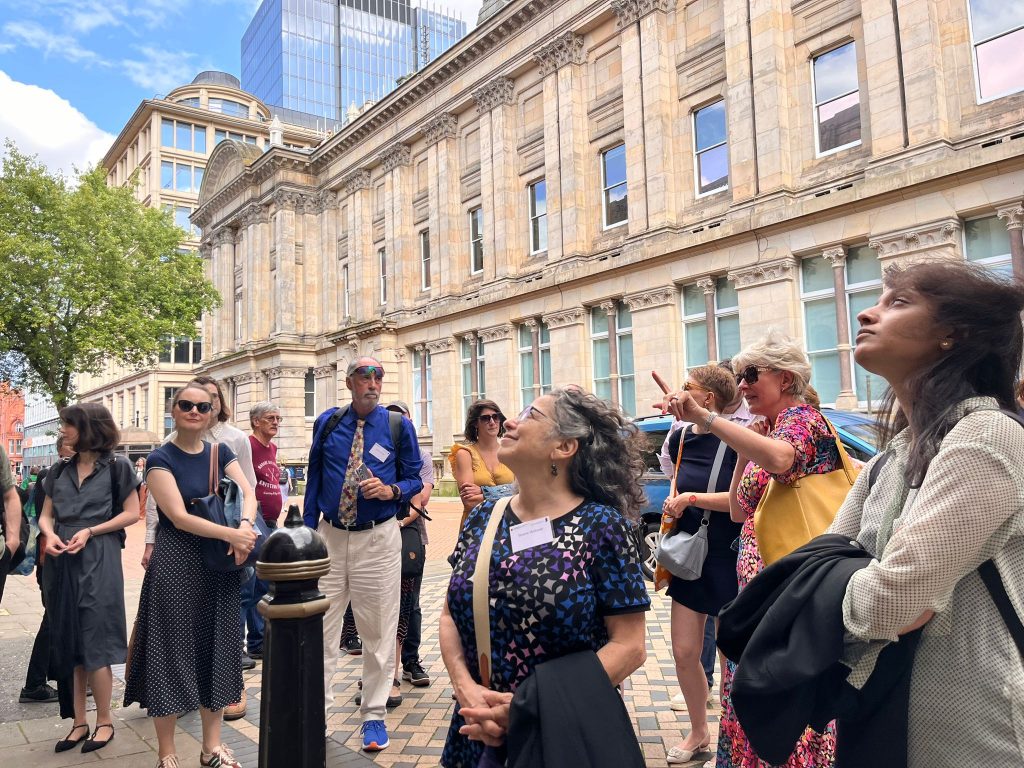
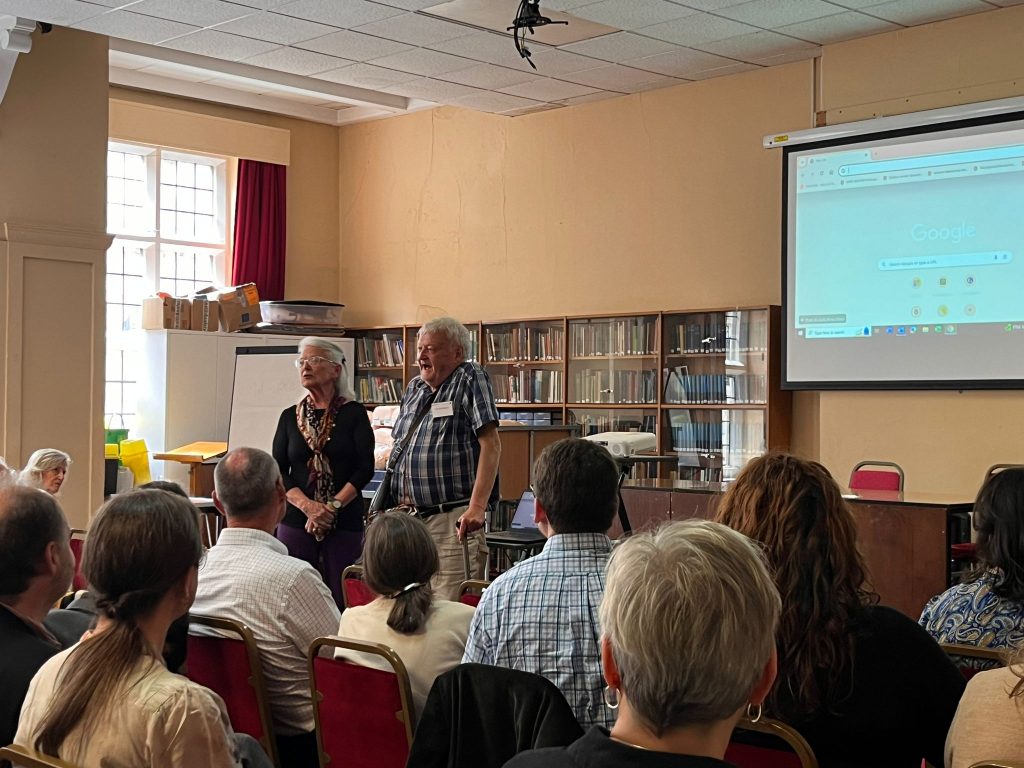
Dickens’s Enduring Legacy
As England’s first civic university, Birmingham provided an ideal backdrop for Dickensian discourse and discussion. By blending traditional analysis with innovative humanities approaches, the symposium showcased how Dickens’s works continue to offer valuable insights into contemporary issues. From exploring adaptations across cultures to examining his social critiques through new lenses, the event demonstrated the author’s universal appeal and timeless storytelling.
The symposium’s very interdisciplinary nature – encompassing history, sociology and technology – reinforced Dickens’s position as a catalyst for academic inquiry and cultural reflection. Now, as we reflect on the symposium’s contributions and reflections on Charles Dickens’s lasting impact, we are reminded of such words from the bildungsroman David Copperfield: “Whether I shall turn out to be the hero of my own life, or whether that station will be held by anybody else, these pages must show” (1).
Dickens’s works continue to captivate readers and scholars alike, offering a rich tapestry of contrasts and complexities that invite examination of human nature and society. While his personal flaws and prejudices cannot be ignored, the study of Dickens’s life, works and legacy provides valuable insights into both 19th-century England and our own time. His ability to entertain while addressing social issues ensures his enduring relevance in literature and academic discourse, even as we critically engage with all aspects of his character and output. Ultimately, it is through this nuanced exploration of Dickens – his brilliance and his shortcomings – that we gain a deeper understanding not only of the author but of the ever-evolving relationship between art, society and the human condition.
Works Cited
Dickens, Charles. A Tale of Two Cities. Oxford University Press, 1859/2008.
Dickens, Charles. David Copperfield. Oxford University Press, 1850/2008.
Dickens, Charles. The Speeches of Charles Dickens. Michael Joseph, 1841. Birmingham Conservation Trust. “Dickens Visits Birmingham.” 19 December 2012, http://www.birminghamconservationtrust.org/2012/12/19/dickens-visits-birmingham/. Accessed July 2024.
Grapevine Birmingham. “Charles Dickens’ love of Birmingham and his first public readings of A Christmas Carol.” 24 December 2019, https://www.grapevinebirmingham.com/charles-dickens-love-of-birmingham-and-his-first-public-readings-of-a-christmascarol/. Accessed July 2024.
Trowbridge, Serena. “Hard Times at the BMI.” 18 May 2020, https://blog.bham.ac.uk/clicdickens/2020/05/18/hard-times-at-the-bmi/. Accessed July 2024.


